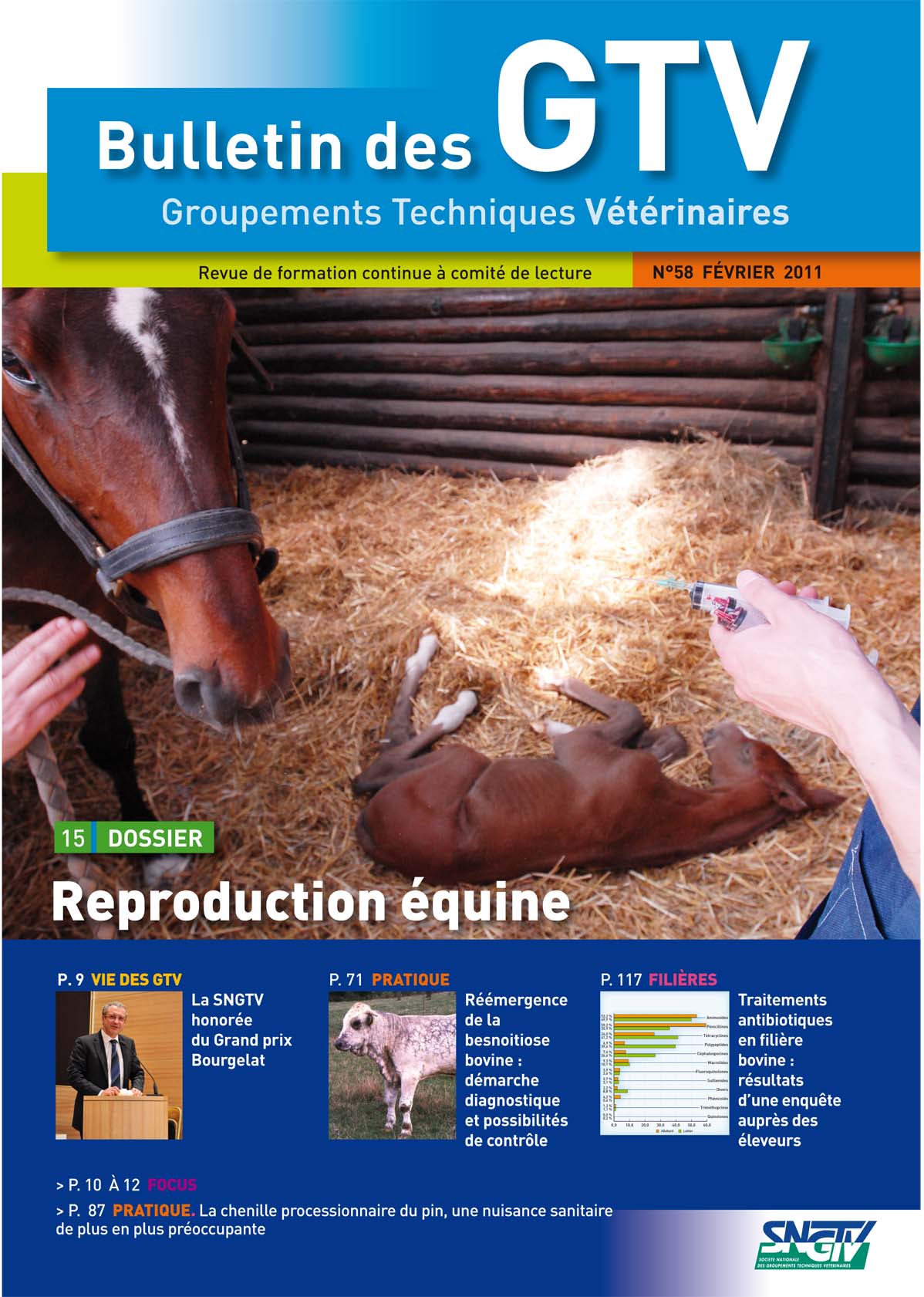La non-délivrance chez la jument

Auteurs
Résumé
Chez la jument, on parle de non-délivrance quand celle ci n’a pas expulsé les membranes foetales 3 heures après le poulinage. Les complications de cette pathologie, liées au développement microbien et à la production d’endotoxines, peuvent être très graves : métrite aiguë, septicémie, endotoxémie et fourbure. Le diagnostic est très souvent évident, avec protrusion du placenta aux lèvres vulvaires mais parfois plus délicat, avec quelques morceaux de délivrance non évacués. Après chaque poulinage, l’examen de la délivrance est donc primordial. La démarche thérapeutique dépend de la précocité de la prise en charge ; le traitement est essentiellement basé sur des injections réitérées d’ocytocine et des lavages utérins, associés ou non à une thérapeutique antimicrobienne et anti-endotoxémique. Le décollement manuel est de nos jours contre-indiqué en raison des lésions iatrogènes inflammatoires et hémorragiques qu’elle induit.
Abstract
In the mare, one talks of non-delivery when the foetal membranes have not been expulsed 3 hours after foaling. The complications of this pathology, linked to microbial development and to the production of endotoxins, can be very serious: acute metritis, septicaemia, endotoxaemia and lameness. The diagnosis is often very obvious, with the placenta protruding between the lips of the vulva. However, sometimes it is more difficult because some pieces of placenta may have remained in the uterus. After each foaling, the examination of the placenta is essential. The treatment chosen depends on whether the veterinary surgeon is able to intervene early. Treatment is essentially based on repeated injections of oxytocin and uterine washes associated in some cases with an antimicrobial and an antiendotoxaemic treatment. The manual removal of adhering pieces of placenta is currently contra-indicated due to the iatrogenic inflammatory and haemorrhagic lesions that it produces.


